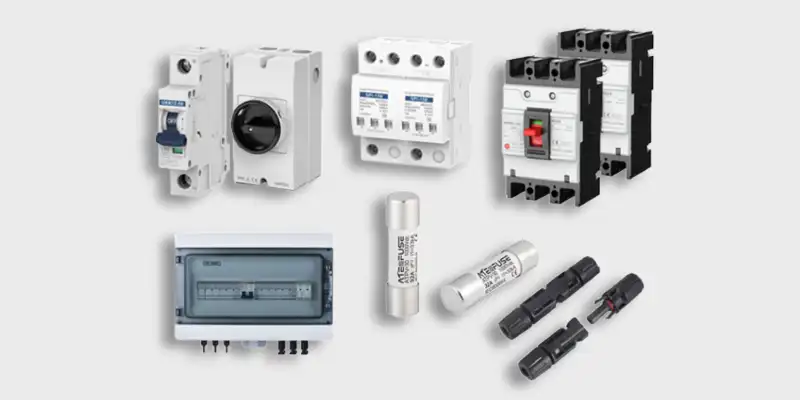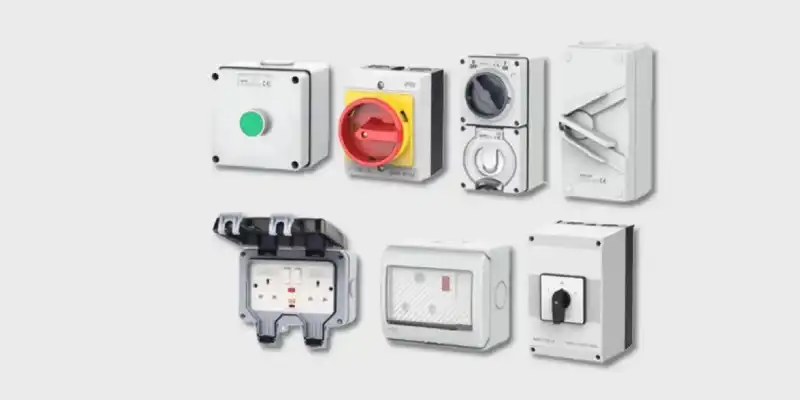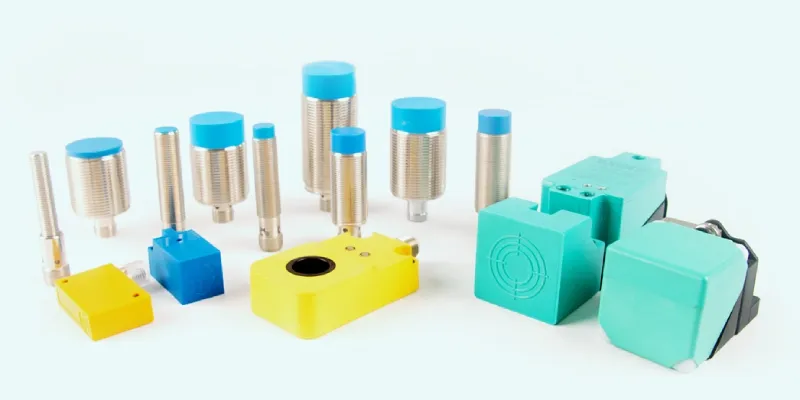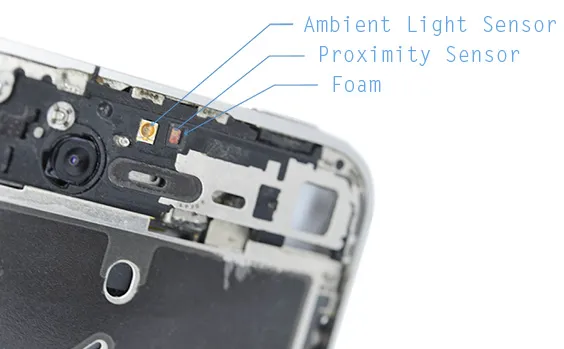I. Introduction to Proximity Sensors in Phones
A. Definition of proximity sensors
A proximity sensor is a device used in smartphones to detect the presence of nearby objects without physical contact. It typically operates by emitting an electromagnetic field or a beam of electromagnetic radiation (such as infrared) and measuring changes in the field or the return signal from nearby objects. In smartphones, these sensors are crucial for enabling various functions that enhance user experience.
B. Basic function in smartphones
The primary function of a proximity sensor in smartphones is to determine how close the user is to the device. This capability allows the sensor to perform several key actions:
- Screen Activation/Deactivation: The sensor automatically turns on the screen when the user looks at it and turns it off when the phone is brought close to the ear during calls. This prevents accidental touches while ensuring that the display is accessible when needed.
- Facial Recognition: Proximity sensors also facilitate facial recognition technology, allowing users to unlock their phones securely and conveniently.
- Battery Conservation: By turning off the display when not in use, proximity sensors help conserve battery life, contributing to overall energy efficiency.
II. How Proximity Sensors Work
Types of Proximity Sensors Used in Phones
- Infrared (IR) Sensors:
Infrared proximity sensors emit infrared light and detect the amount of light reflected back from nearby objects. When an object approaches, it either reflects or blocks the IR light, which triggers a response in the sensor. This type is commonly used in smartphones to turn off the display during calls to prevent accidental touches.
- Capacitive Sensors:
Capacitive proximity sensors operate by detecting changes in capacitance caused by the presence of an object. They consist of two conductive plates separated by a dielectric material. When an object enters the sensor’s electric field, it alters the capacitance between the plates, which activates the sensor. These sensors can detect both conductive and non-conductive materials, making them versatile for various applications in smartphones.
Operating Principles
Proximity sensors function by emitting a signal and measuring the response from nearby objects. The operating principles vary based on the type of sensor:
- Infrared Sensors: These sensors emit infrared light and measure how much light is reflected back to determine if an object is nearby. The change in reflected IR light indicates proximity, allowing the phone to respond accordingly, such as turning off the screen during a call.
- Capacitive Sensors: Capacitive sensors work by creating an electric field around them. When a conductive or non-conductive object enters this field, it changes the capacitance detected by the sensor. This change triggers a response, such as turning off the display or activating other features of the smartphone.
III. Purpose and Applications
A. Preventing Accidental Touches During Calls
One of the primary purposes of proximity sensors in smartphones is to prevent accidental touches during phone calls. When a user brings the phone close to their ear, the proximity sensor detects this and automatically turns off the display. This feature ensures that the user’s face does not unintentionally activate buttons or features, which can lead to disruptions during a conversation, such as muting or hanging up the call.
B. Power Saving by Turning Off the Screen
Proximity sensors play a significant role in power saving by turning off the screen when it is not in use. By automatically deactivating the display when the phone is placed near the user’s body (for example, during a call), these sensors help conserve battery life. This automatic dimming or shutting off of the screen reduces energy consumption, contributing to the overall efficiency of the device.
C. Other Applications in Smartphones
In addition to preventing accidental touches and conserving battery life, proximity sensors have several other applications in smartphones:
- Facial Recognition: Proximity sensors assist in facial recognition technology, enabling secure and convenient unlocking of devices. By detecting when a user is looking at their phone, it can activate the camera for facial authentication.
- Automatic Screen Activation: These sensors can also trigger screen activation when a user picks up their phone or approaches it, allowing for quick access to notifications and applications without needing to press any buttons.
- Touchless Interactions: Some smartphones leverage proximity sensors for touchless interactions, allowing users to control certain features (like scrolling or navigating) without physical contact, enhancing usability and hygiene.
IV. Technical Specifications
A. Range of Detection
The range of detection for proximity sensors varies depending on the type used. Generally, the detection range can be categorized as follows:
- Infrared (IR) Sensors: Typically have a detection range of about 1 to 10 centimeters, making them suitable for close-range applications like phone calls.
- Capacitive Sensors: These sensors can detect objects at a range of approximately 1 to 5 centimeters, depending on the dielectric properties of the object being detected. Their sensitivity allows them to detect both conductive and non-conductive materials.
B. Response Time
Proximity sensors are known for their fast response times, which are essential for applications requiring immediate feedback. The response time can vary, but it is generally in the range of:
- Infrared Sensors: Response times can be as quick as a few milliseconds, allowing for nearly instantaneous activation or deactivation of functions like screen dimming during calls.
- Capacitive Sensors: These sensors also exhibit rapid response times, typically within a few milliseconds, ensuring seamless user interactions.
C. Power Consumption
Power consumption is a critical factor for mobile devices, and proximity sensors are designed to be energy-efficient:
- Infrared Sensors: Generally consume low power while active and can enter a sleep mode when not in use, further conserving battery life.
- Capacitive Sensors: Similarly, these sensors are designed to operate with minimal power consumption, often using less energy than traditional mechanical switches.
V. Integration with Other Phone Components
A. Interaction with the Display
Proximity sensors are integral to the interaction with the display of smartphones. When a user makes a call and brings the phone close to their ear, the proximity sensor detects this movement and automatically turns off the display. This prevents accidental touches that could disrupt the call, such as muting or hanging up unintentionally. The sensor operates by analyzing infrared light emitted from the device and measuring the reflection from nearby objects, ensuring that the screen remains off when it is not needed. Additionally, when the phone is moved away from the ear, the sensor reactivates the display, allowing users to easily access notifications and other functions without needing to press any buttons.
B. Coordination with the Phone’s Operating System
The coordination with the phone’s operating system is crucial for maximizing the functionality of proximity sensors. The operating system interprets signals from the proximity sensor to manage various features effectively. For instance, when a user lifts their phone to their face, the OS can use input from the proximity sensor to turn on the display or activate facial recognition features.
Moreover, advanced algorithms are implemented to set thresholds for when to activate or deactivate functions based on proximity readings. This helps minimize false positives, such as turning off the screen when a user covers it with their hand instead of bringing it close to their face. The integration also allows for adjustments based on environmental factors, such as ambient light conditions, enhancing performance in diverse scenarios.
VI. Advancements in Proximity Sensor Technology
A. Improved Accuracy and Reliability
Proximity sensor technology has seen significant advancements in recent years, leading to improved accuracy and reliability. Manufacturers have developed new sensor designs and materials that enable higher resolution and precision. For example, advances in sensor miniaturization have resulted in the creation of compact inductive and capacitive sensors that provide more accurate results, especially in industries like semiconductor manufacturing that rely heavily on precision.
Additionally, the integration of artificial intelligence (AI) and machine learning into proximity sensors allows for better forecasting and response to changes in production environments. This optimization of automated systems leads to enhanced accuracy and reliability of proximity sensors.
B. Integration with Other Sensors
Proximity sensors are increasingly being integrated with other types of sensors to provide more comprehensive and accurate data. One notable example is the integration of proximity sensors with ambient light sensors (ALS) in smartphones.
By combining proximity and ambient light sensing, smartphones can automatically adjust the display brightness based on the user’s proximity to the device and the surrounding light conditions. This integration enhances user experience by ensuring optimal visibility while conserving battery life.
Moreover, the integration of proximity sensors with other sensors, such as accelerometers and gyroscopes, enables advanced features like gesture recognition. This allows users to control certain functions of their devices without physically touching the screen, further improving usability and hygiene.











